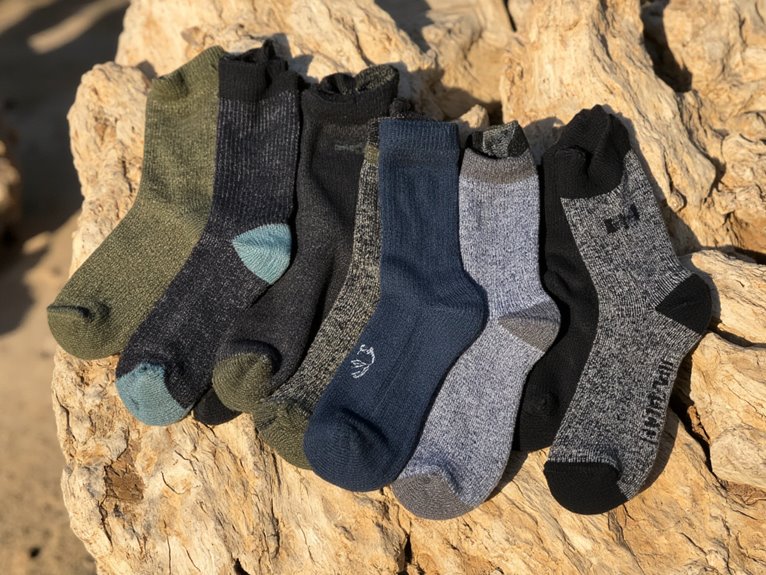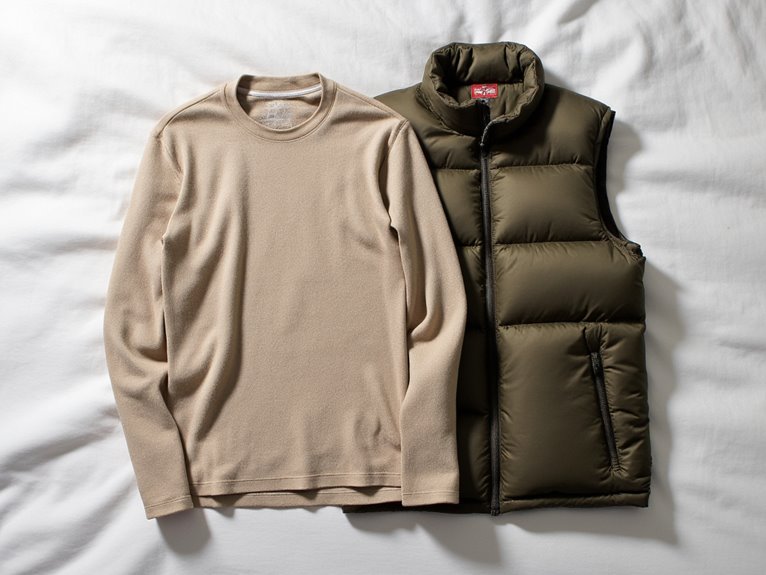Can I Wear Flip Flops Kayaking?
Wearing flip flops while kayaking is a significant safety risk due to their lack of protection, traction, and ankle support. They increase the risk of foot injuries, compromise stability and control, and make it difficult to get back into the kayak after a capsize. With flip flops, kayakers expose themselves to a range of safety risks, including foot entrapment and ankle sprains. It's essential to prioritize safety and choose alternative footwear options that provide reliable traction, protection, and support. To discover more about safe kayaking practices and the benefits of water shoes, delve further.
We are supported by our audience. When you purchase through links on our site, we may earn an affiliate commission, at no extra cost for you. Learn more. Last update on 7th January 2026 / Images from Amazon Product Advertising API.
Why Flip Flops Are a Bad Idea
Flip flops, a staple of warm-weather footwear, are a hazardous choice for kayaking, as they offer little protection for the feet and can create a slippery surface on the kayak's deck.
When traversing rough waters or dealing with wet conditions, the last thing you want is footwear that compromises your stability.
Flip flops lack the ankle support and traction needed for secure footing, making it difficult to maintain balance and control.
Additionally, their soft, lightweight design provides minimal protection from underwater hazards, such as sharp rocks or shells.
Furthermore, their lack of protection increases the risk of injury.
For a safe and enjoyable kayaking experience, it's essential to opt for sturdy, water-friendly footwear that provides the necessary support and protection.
Safety Risks of Wearing Flip Flops
Beyond the compromised stability and control, wearing flip flops while kayaking also exposes you to a range of safety risks that can quickly turn a fun day on the water into a disaster.
One of the most significant risks is foot entrapment, where your flip flops get stuck in the kayak's footwell or other underwater obstacles, making it difficult to free yourself in emergency situations.
Additionally, flip flops offer little protection against sharp rocks, broken glass, or other hazardous debris that you may encounter while kayaking.
In addition, in the event of a capsize, flip flops can slip off, leaving your feet vulnerable to injury.
It's essential to prioritize safety and opt for secure, protective footwear while kayaking.
Difficulty Getting Back in Kayak
Wearing flip flops while kayaking can also create difficulties when trying to get back into the kayak after a capsize, as the lack of secure footing and traction can make it challenging to hoist oneself back into the kayak. This can lead to frustration, exhaustion, and potentially even more hazards.
Reduced grip on the kayak hull, increased risk of slipping off the kayak, difficulty finding stable footing in the water, and slower re-entry into the kayak, leaving you vulnerable to currents or other hazards, are all reasons why wearing flip flops can make it difficult to get back into the kayak.
Increased Risk of Foot Injuries
Kayakers who opt for flip flops instead of secure footwear expose their feet to a heightened risk of injuries, including cuts, bruises, and abrasions, particularly when paddling through or traversing rocky or debris-laden waterways.
Sharp objects, such as rocks or broken glass, can easily pierce the thin soles of flip flops, causing lacerations or puncture wounds.
Additionally, the slippery surface of flip flops can lead to foot slippage, increasing the risk of ankle twists or ankle sprains.
The risk of foot injuries is further exacerbated by the wet and slippery conditions often encountered while kayaking.
In order to prioritize foot safety, wearing sturdy, closed-toe shoes that provide adequate protection and support is crucial.
Ankle Support and Stability Issues
Flip flops, with their lack of ankle straps or high sides, often fail to provide adequate ankle support and stability, leaving kayakers vulnerable to ankle rolls, twists, and sprains, particularly when traversing rough waters or exiting the kayak.
This lack of support can lead to a range of issues, including:
- Reduced balance and coordination
- Increased risk of ankle injuries
- Decreased control over the kayak
- Impaired ability to respond to changing water conditions
Traction Problems on Wet Surfaces
When kayakers step out of their kayak onto a wet surface, the smooth sole of flip flops can lead to slippery situations, increasing the risk of accidents and injuries.
The lack of traction on wet surfaces, such as docks, boats, or riverbanks, makes it challenging to maintain balance and stability.
This is particularly concerning in kayaking, where a single misstep can result in a fall, injury, or even capsize.
In addition, the inability to gain a secure footing can lead to a loss of control, making it difficult to maneuver the kayak or respond to changing water conditions.
Prioritizing traction and stability when kayaking is crucial, and flip flops simply do not provide the necessary grip and support.
Flip Flops Can Be a Distraction
Wearing flip flops while kayaking can be a recipe for disaster, as the constant adjustments and readjustments needed to keep them secure can divert attention away from the surrounding environment and the task at hand.
This distraction can lead to a range of problems, including:
Reduced situational awareness, making it harder to respond to changing conditions.
Decreased reaction time, increasing the risk of accidents.
Diverted focus, compromising paddling technique and overall performance.
Increased mental fatigue, making the kayaking experience less enjoyable.
Alternative Footwear Options Exist
Fortunately, several alternative footwear options are available on the market, designed specifically for water sports and offering a more secure and comfortable kayaking experience.
These alternatives cater to different preferences and needs, ensuring a more enjoyable and safe paddling experience.
For instance, water shoes with good grip and drainage are perfect for kayakers who frequent rocky or slippery surfaces.
Neoprene booties provide insulation and protection from cold water, while sandals with toe protection and adjustable straps offer a snug fit.
Additionally, there are shoes specifically designed for kayak fishing, with features like slip-resistant soles and breathable mesh panels.
Water Shoes for Kayaking Benefits
In the realm of kayaking, water shoes offer a trio of benefits that can enhance your paddling experience.
Initially, they provide reliable traction on wet surfaces, giving you a secure foothold as you enter and exit your kayak.
Additionally, water shoes protect your feet from sharp debris and obstacles, while also ensuring comfort on long paddles.
Traction on Wet Surfaces
Traction on wet surfaces is a critical consideration for kayakers, as a single misstep on a slick boat ramp or dock can lead to a dangerous fall or accident. Water shoes with good grip can make all the difference in preventing slips and falls.
Improved stability: Water shoes with deep lugs and a grippy sole provide stability on wet surfaces, reducing the risk of slipping.
Better grip on boat ramps: Water shoes with rubber soles can grip boat ramps and docks, making it easier to get in and out of your kayak.
Reduced risk of injury: By preventing slips and falls, water shoes with good traction can reduce the risk of injury while kayaking.
Increased confidence: With the right water shoes, you can focus on your kayaking adventure with confidence, knowing your feet are secure on wet surfaces.
Protection From Debris
Vulnerability to sharp rocks, shells, and other underwater hazards is a constant threat to kayakers, making protective footwear an essential component of a safe and enjoyable paddling experience.
Water shoes for kayaking provide a protective barrier between your feet and the unforgiving underwater environment. They shield your feet from cuts, scrapes, and puncture wounds, allowing you to focus on your paddling technique and navigation.
Additionally, water shoes often feature reinforced soles and tough materials that can withstand the rigors of kayaking.
Comfort on Long Paddles
Kayakers setting out on extended paddling excursions understand the importance of comfort, as even slight discomfort can amplify into debilitating fatigue over time, making water shoes an indispensable component of a successful and enjoyable kayaking experience.
A good pair of water shoes can make all the difference on a long paddle, providing cushioning, support, and breathability to keep your feet happy and healthy.
Reduced blisters and hotspots from constant friction are a major benefit.
Improved ankle stability and support for more efficient paddling is another advantage.
Quick-drying materials to prevent waterlogged shoes are also essential.
Increased grip on the kayak's footwells for better control is a key feature.
Dress for Safety on the Water
On the water, wearing attire that prioritizes safety and comfort can make all the difference between a delightful kayaking experience and a disastrous one.
When planning your outfit, it's essential to think about the elements you'll encounter. Look for clothing that offers protection from the sun, wind, and water.
A breathable, quick-drying top and leggings or shorts will help regulate your body temperature and prevent chafing. A hat, polarized sunglasses, and a personal flotation device (PFD) are also must-haves.
Additionally, wear closed-toe shoes with a good grip to prevent slipping on the kayak's deck.
In terms of dressing sensibly, prioritize safety above style, and remember that proper attire is crucial for a pleasant kayaking experience. By dressing sensibly, you'll be free to focus on the thrill of kayaking, rather than worrying about your attire.





